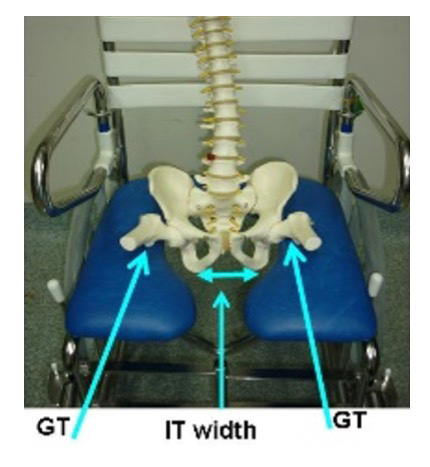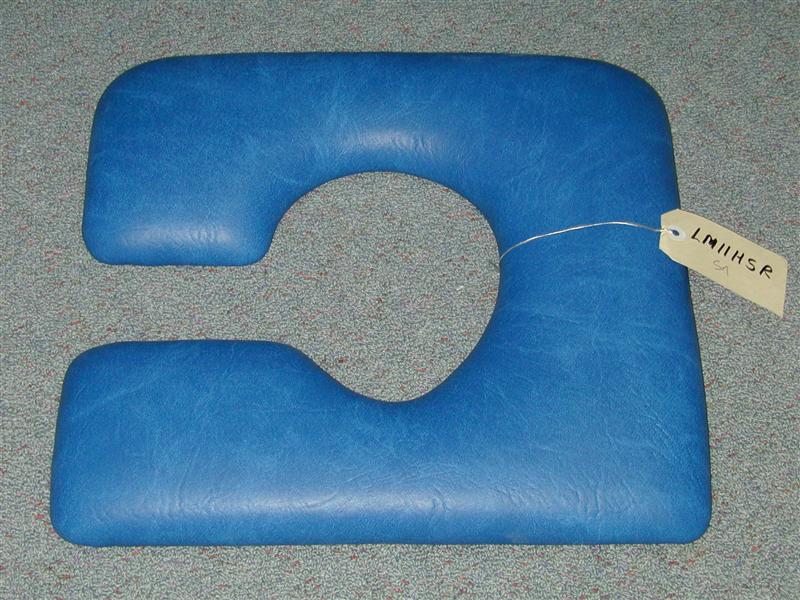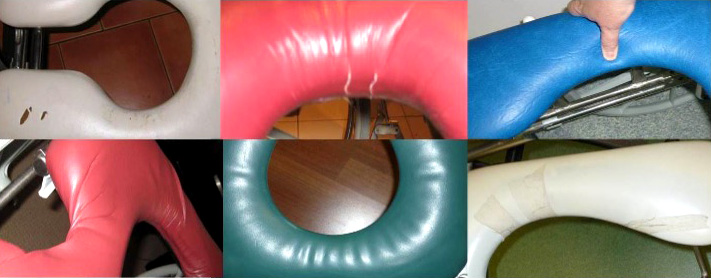Skin considerations when showering and toileting
Showering and toileting aids increase the risk to skin integrity because:
- The skin is exposed when using or transferring onto the equipment.
- Most commodes, toilets and benches with apertures have a reduced seating surface area.
- Many bathrooms offer less circulation space, increasing the difficulty of toilet transfers.
- Shower commodes have a higher seat clearance, increasing the difficulty of toilet transfers.
- Machine-made seats have limited padding or heat-welded seams, that can leave sharp edges.
- Showering aids are used in water increasing the risk of sliding, and falling during transfers and/or movement on the aid.
Common problems with showering and toileting aids
- Dry trials: Testing bathroom equipment before use, known as ‘dry trials’, does not allow for an accurate comparison of use in wet conditions, where the person will be naked, wet, sitting for a prolonged time and reaching or leaning to carry out self-hygiene.
- Padding: Consider the need for padded equipment for people who have sensory deficits, including benches and toilet seats.
- Shear and friction: Can occur during repositioning, while performing repetitive bowel tasks.
- Sacral pressure: Positioning the sacrum on the rear of the seat aperture increases stability but increases pressure over the sacral region.
- Natal cleft stretching or splitting: This can occur because of too much weight shift and movement forward into the aperture, usually due to poor posture or the aperture being too big.
- Reduced stability and balance in an upright position: Postural stability can be achieved with an appropriate combination of thigh, trunk, arm and foot support. Seat-to-backrest angle, tilt-in space function, armrests and leg rest supports should all be considered to achieve stable seating in a commode.
- Ischial pressure: Skin breakdown can occur when the ischial bones make contact with the internal rim at the side or front. This can be a result of inappropriate aperture shape and size or postural changes. The risk is higher with poor quality seat padding at the aperture.
- Side opening seats: A complete cut-out of the seat and frame creates corners that cause points for potential increased pressure. An alternative could be a ‘bite’ in the seat, which enables the person to reach close to their thigh for hygiene and toileting needs as well as retain pressure distribution over the thigh.
- Suboptimal equipment maintenance: See ‘Showering and toileting equipment maintenance checklist‘ below.

Location or pelvis in mobile shower commode chair aperture and seat.
Source: QSCIS

Side opening mobile shower commode chair seat.
Source: QSCIS
Shower chair seat maintenance
It is important to maintain equipment and complete regular checks. On a mobile shower commode seat, ensure you check the following:
- Brittleness of the vinyl, where it loses stretch and conformity. This may appear as creases or cracks in the covering.
- Exposure of the baseboard, often along the inner rims of apertures where foam has lost resilience. Clinicians can assess this through palpation of the foam.
- Damage to the foam or vinyl. Damage may be noted when air can be heard expressing from the seat when sitting on it, or as visible compression of the foam.

Examples of shower commode seat damage (tears, brittle vinyl, splits vinyl, baseboard palpated on compression, and creases)
Source: QSCIS